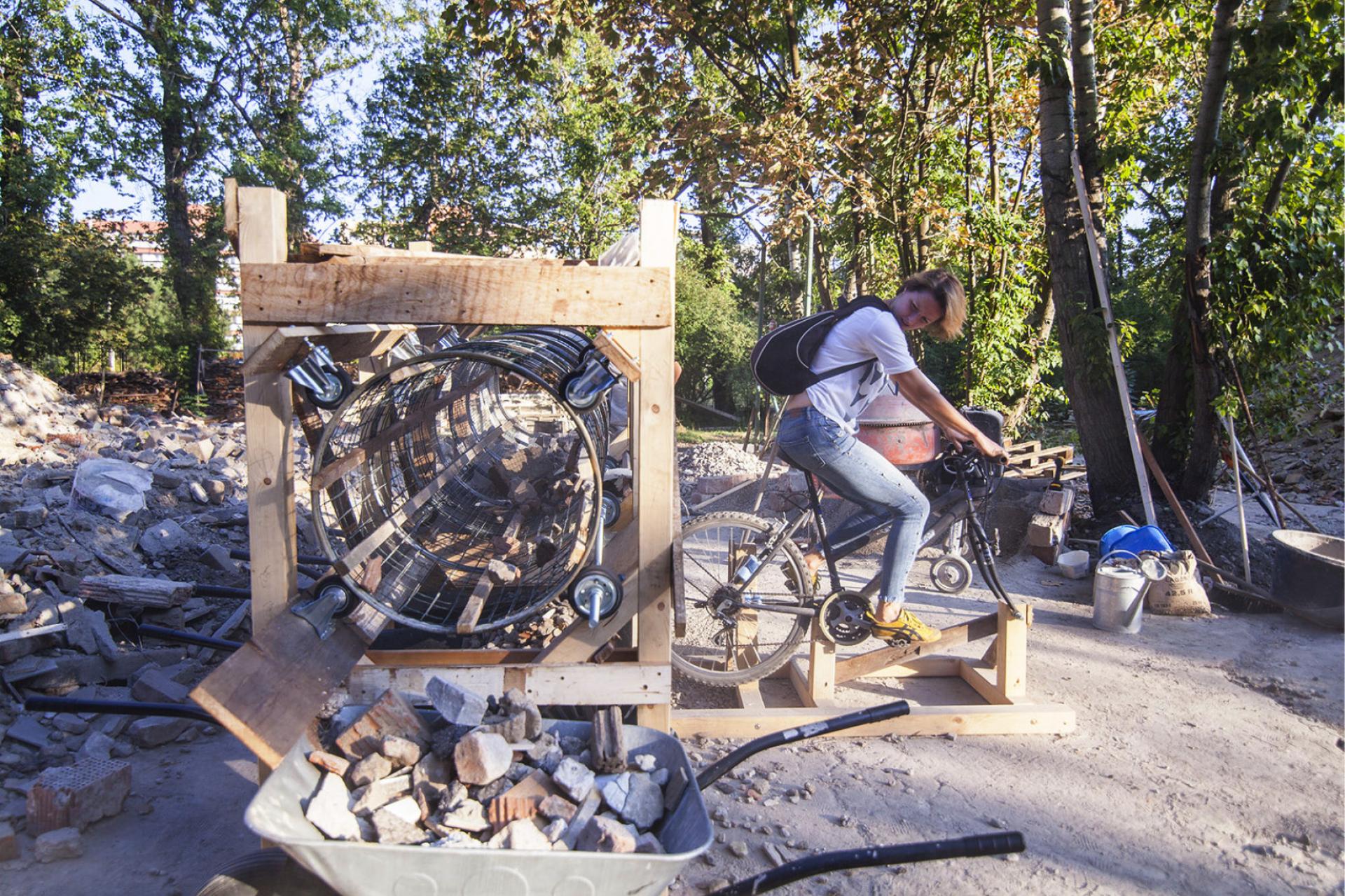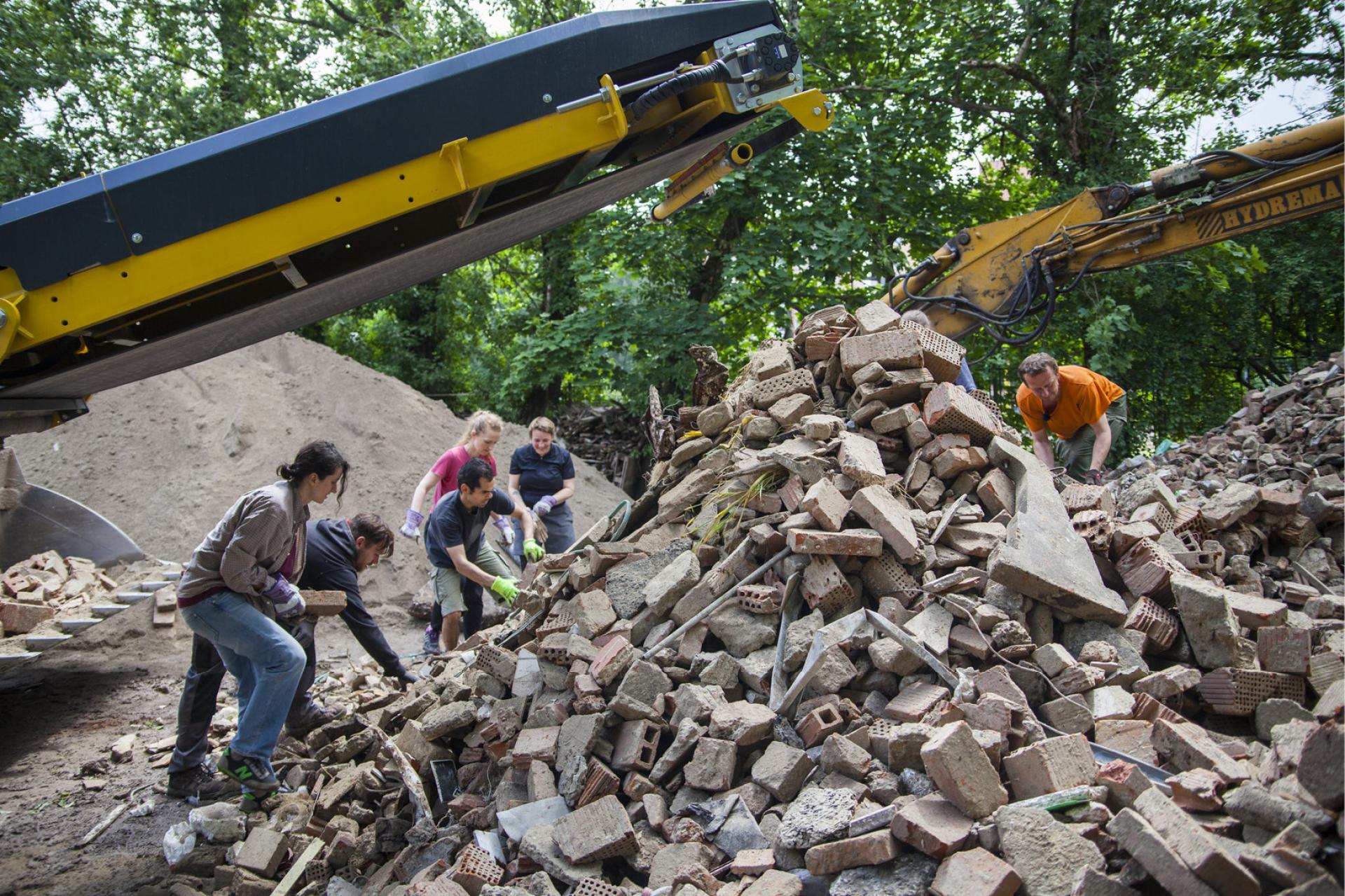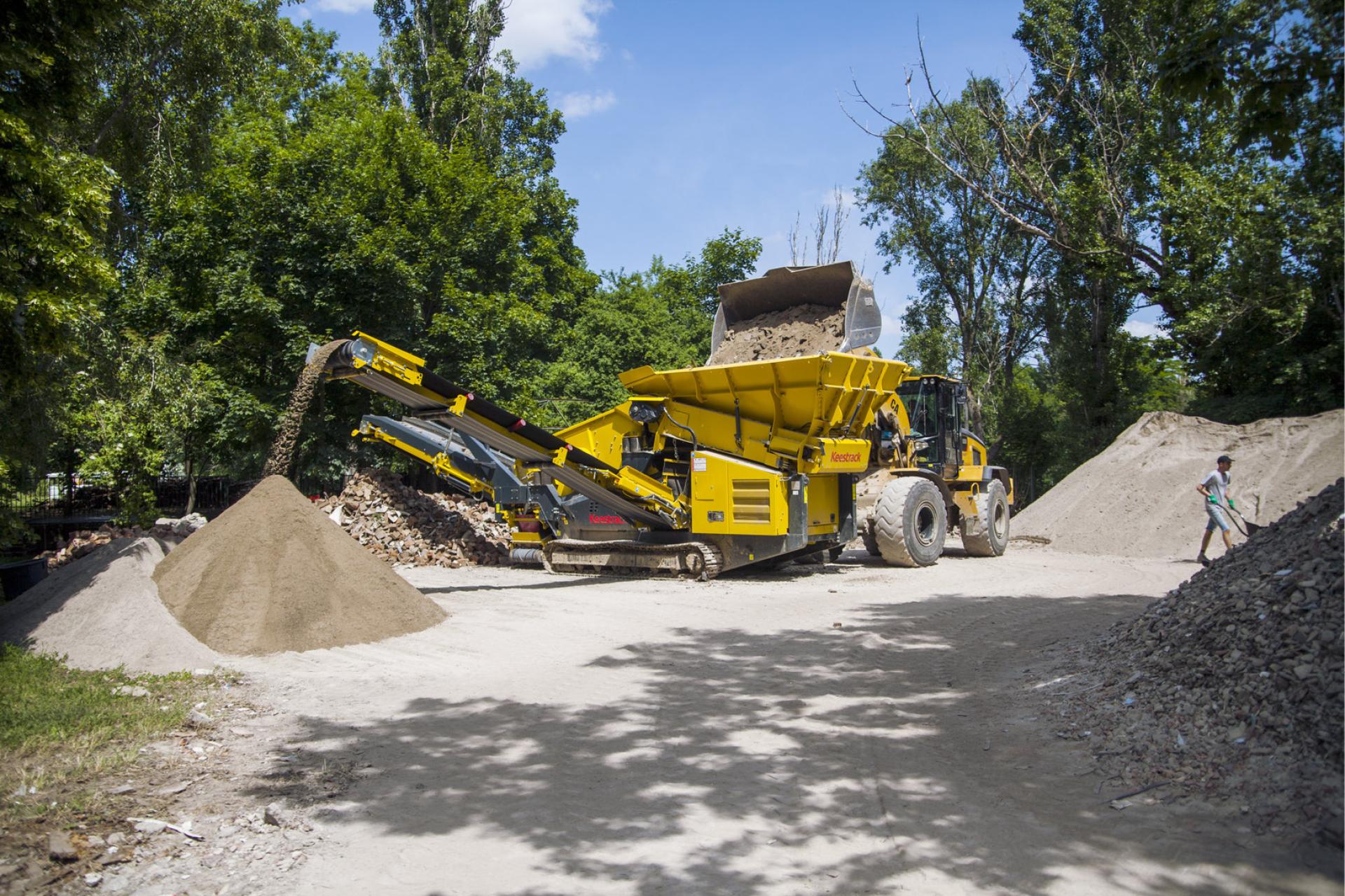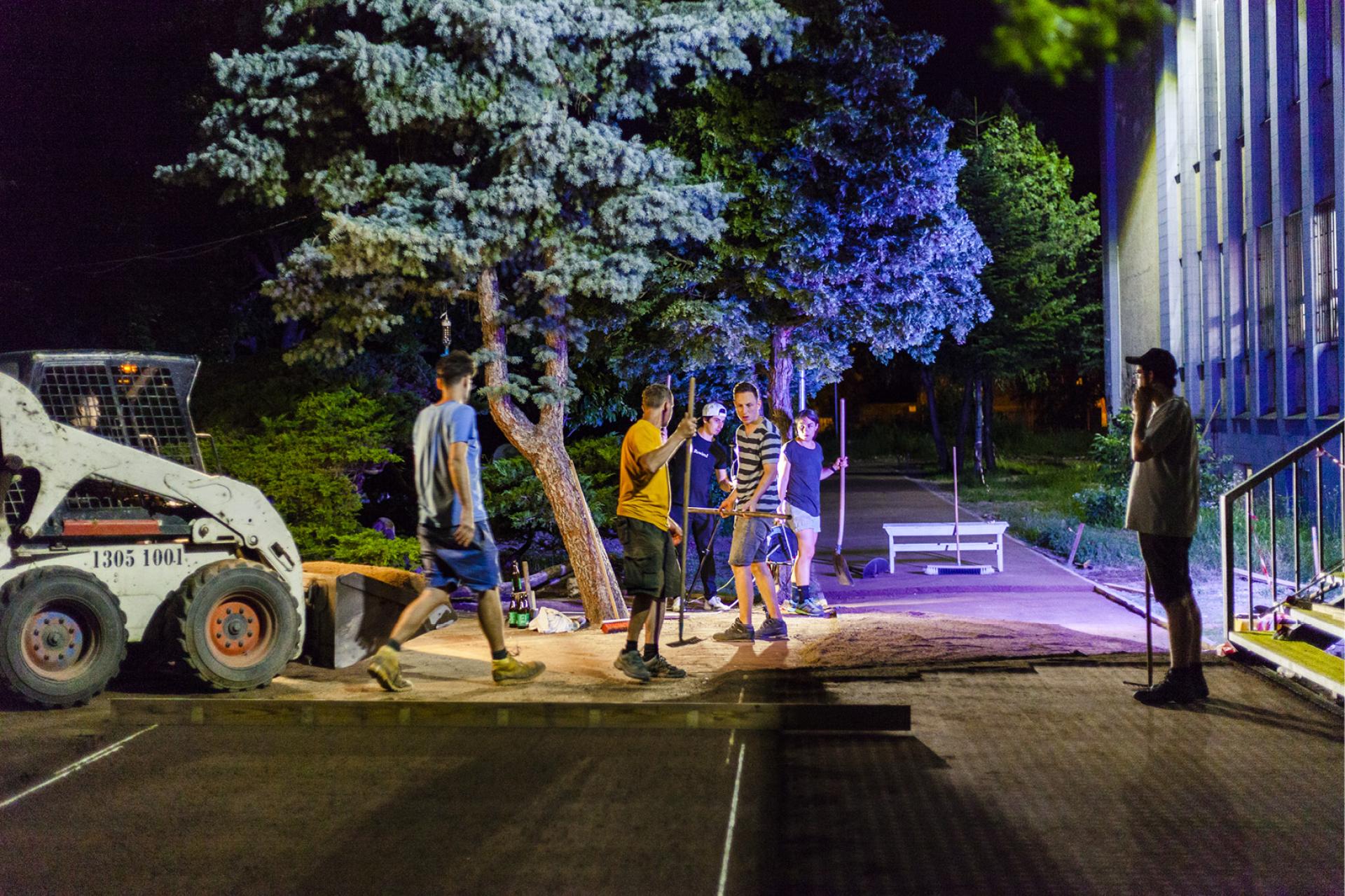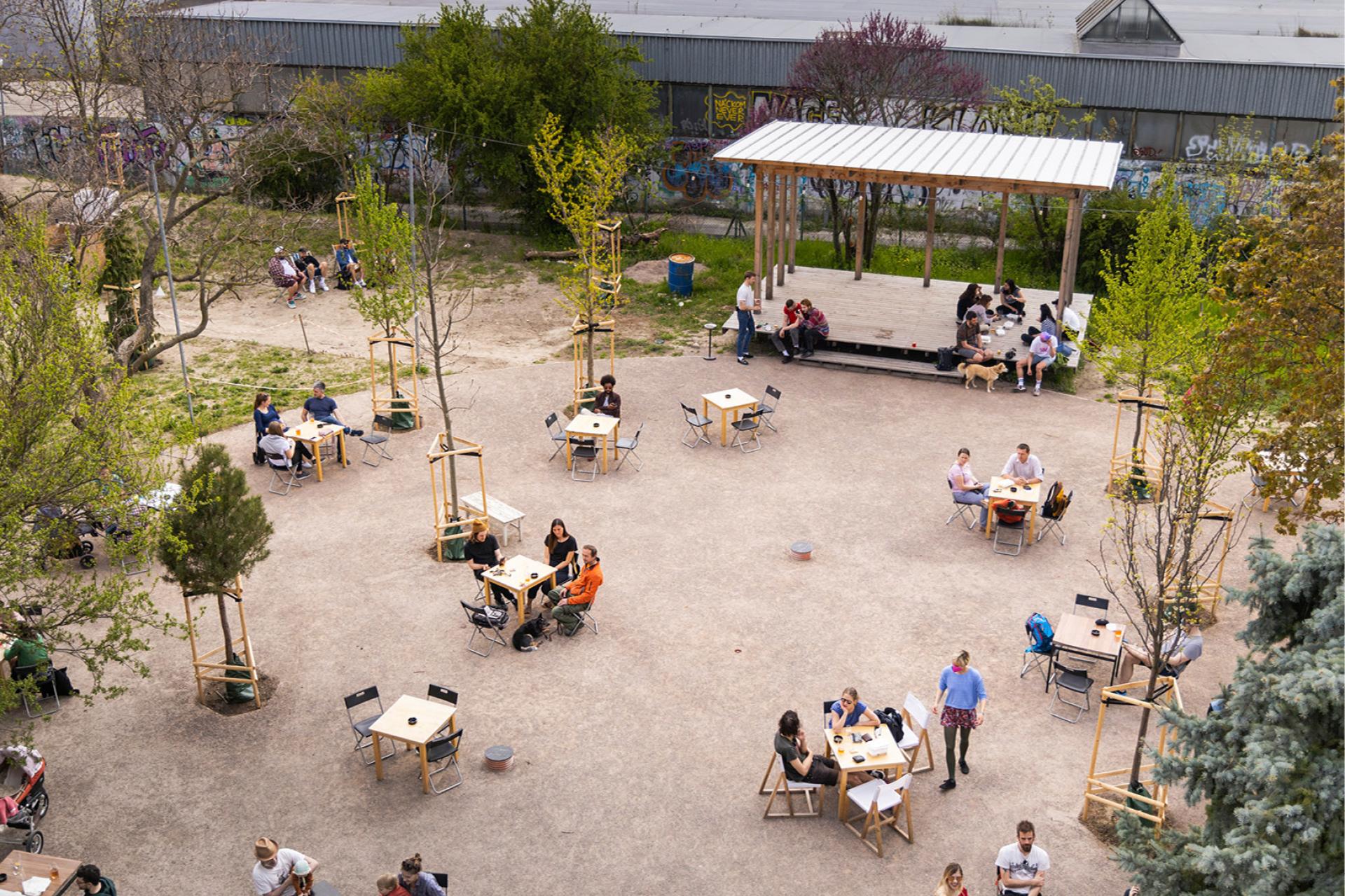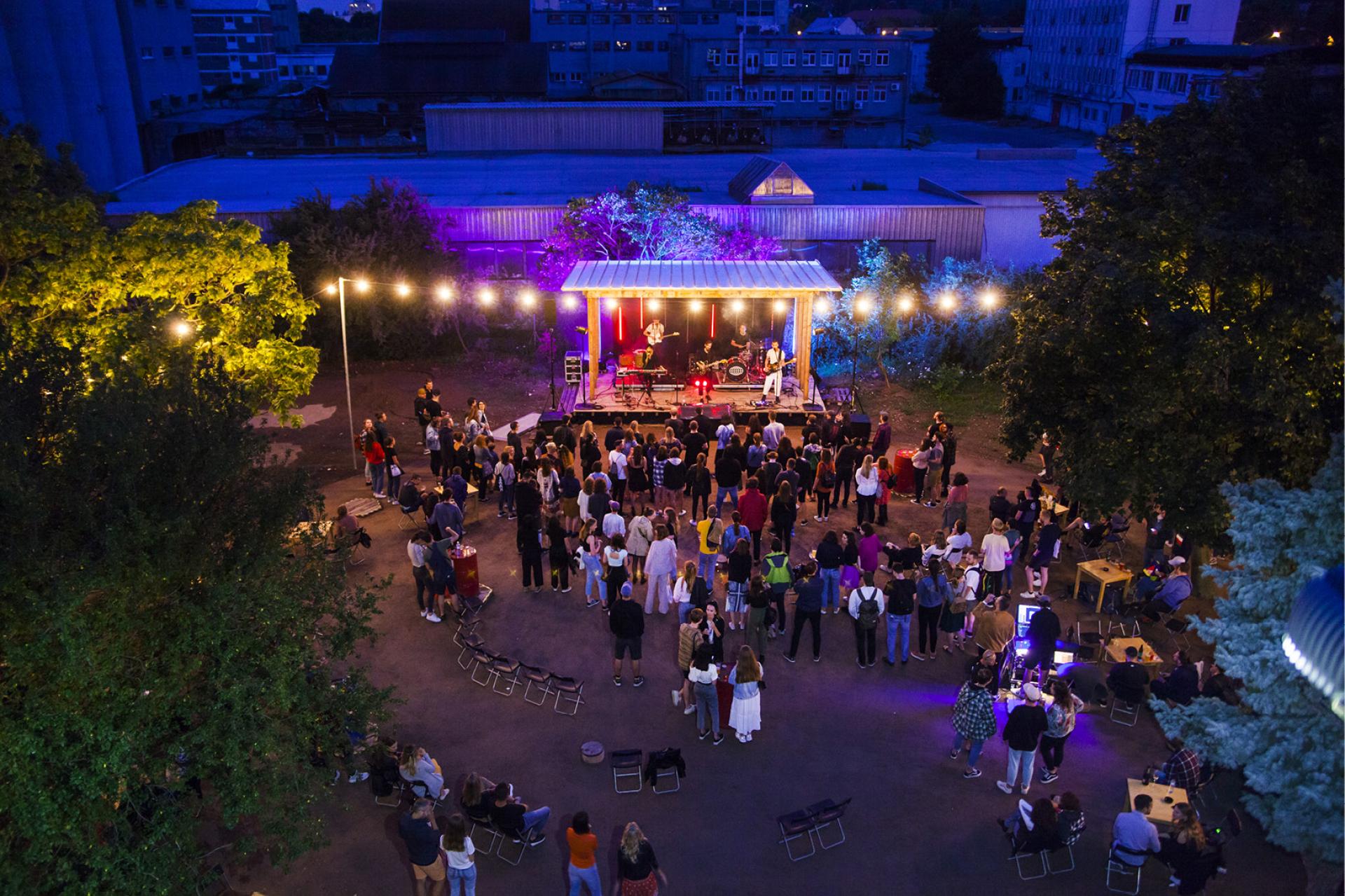From Rubble To Park
Basic information
Project Title
Full project title
Category
Project Description
We are a community of environmentally-aware creatives and artists who acquired an abandoned complex of buildings, and started to reconstruct it into a cultural and creative centre. The beginnings resulted in huge piles of construction waste. We found a solution to minimize the waste disposal, maximize recycling and reusing it on site - we turned our rubble into water-permeable and water-storing surfaces around the building where the waste came from. The result is a lively venue in a public park.
Project Region
EU Programme or fund
Description of the project
Summary
We are a community of creatives and artists who acquired an abandoned complex of buildings and started to reconstruct it into a cultural and creative centre. The beginnings were tough and rough – stripping the moulded interiors with limited resources and in limited time, all in order to have inhabitable spaces before the winter came. This resulted in more than 1.100 tons of rubble behind the buildings. The business-as-usual solution to the undesired waste was disposing of it at a landfill. Fortunately we didn’t have money for that so we had to start thinking out of the box. What we had was an environmentally-aware, and creative group of people that searched for and found a different solution. After two years of discussions and research we managed to put all the principles we believe in into practice, and developed a replicable solution of minimum waste disposal, maximum on-site recycling and reusing which is also helping the climate change adaptation and benefits both the community and public. We have redesigned the neglected greenery around the buildings into a new public park with a cultural outdoor venue using the rubble waste. We sorted out the rubble into material types, hired a specialized company with machines to grind and sieve it into multiple fractions, becoming a certified recycled material, not a waste anymore. Layering and compacting the individual materials and fractions on the ground resulted in new park pavements, and an outdoor area for cultural events and leisure. The surfaces are solid but the whole mass is water permeable and absorbs, stores and distributes the rainwater to surroundings. Water evaporation in summer prevents surface overheating and creates a cooler micro climate. What was a problem in the beginning turned into an opportunity that saved money, the environment, is beautiful and is a lively and popular place both for the creative community, visitors of cultural events, as well as people from the neighbourhood.
Key objectives for sustainability
We considered our construction waste both as our responsibility and an opportunity. We aimed for a solution to:
- Maximize recycling, conventional reconstruction practices involve transport of construction waste off the site, and its disposal at a landfill. Also the construction waste should follow a hierarchy of minimization, sorting, re-use and recycling and only then disposal.
We wanted to amend the mistake of not sorting the waste from the start. Sorting it enabled the transformation into more quality materials, and minimized the final amount of waste we had to send for landfill.
- Maximize reuse One of the challenges of redirecting the construction sector to sustainable practices is the acquisition of building materials. At present, these are almost exclusively new raw materials. Recycled materials are not widely available, and in Slovakia they still face the stigma of inferiority or unreliability. Waste from reconstruction can be a valuable source of reusable materials. Sorting, grinding, and sieving the waste resulted in a large portfolio of construction materials for new pavements, terrain shaping, and walls
- Maximize on-site use In general, the construction waste is almost exclusively transported off the construction site and handled by an entity other than the builder himself. We wanted to implement the “cradle to cradle” principle to its fullest, and kept all the reusable materials for further reconstruction of the building where the waste came from, and its surroundings.
- Be sustainable, adapted to climate change We have reused the materials into construction of pavements by layering and compacting the fractions of concrete, bricks, and tiles, creating a water permeable mass that absorbs, and stores the rainwater, and distributes it to the adjacent grass and trees, reducing the demand for irrigation
- Be financially feasible. In the end, the most sustainable solution was also the cheapest one. We “only” had to put hours of volunteering work into it.
Key objectives for aesthetics and quality
We aimed for a solution to:
- redesign and reconstruct the park around the buildings in a modern and fluent design, emphasizing openness and diversity with focus on inspiring sustainable solutions
- reuse the recycled rubble into surfaces absorbing and storing the rainwater, evaporating it during the hot summer days, thus creating a pleasant micro climate for the people
- reuse the recycled rubble into barrier-free surfaces, accessible for wheelchairs, child strollers, and bicycles, with only slight inclinations in order to channel excessive rainwater into the adjacent grass and avoid flooding and puddles
- create a visual and sound barrier by creating three hilly structures covered with grass and bushes on the side of the terrace for cultural venues, facing the housing neighbourhood, and by planting the trees in and around it,
- respect and revitalize the existing greenery, and plant more trees and plants to enrich the biodiversity of the site, including bee-friendly plants, and fruit trees
- reuse the recycled rubble into natural, brown-colored surfaces with natural feel and look
Key objectives for inclusion
The creative and cultural centre Nová Cvernovka provides administrative, residential, studio and retail spaces and housing to a community of 450 artists, creatives and innovators. It is already a recognized hotspot for independent culture and the biggest creative cluster in Slovakia.
In the “From Rubble To Park” project, we utilized the skills, experiences and creativity of our community of architects, designers and innovators for designing the plans for reconstruction of the park, for researching and developing the rubble-into-park solution, and planning the greenery revitalization. Majority of the artists & creatives community volunteered at ground works - sorting the rubble, mixing the materials, laying and rolling the pavement layers, and gardening. Another set of skills and know-how has been put into practice by launching the fundraising/crowdfunding campaign – fundraisers, PR managers, graphic designers, photographers, video makers, etc.
The park design has been developed in 2019, in an open, inclusive and participatory approach, with three rounds of public hearings and consultations for both the internal community and the inhabitants of the two housing neighbourhoods. Since its opening in summer 2020, the park has served as an open air cultural and leisure venue for both the internal community and the neighbourhood, and has been welcomed and appreciated greatly, especially after the ban on interior gatherings due to Covid-19 pandemics.
The park is open and publicly accessible for free.
The barrier-free surfaces of the park are accessible for wheelchairs, child strollers, and bicycles.
Results in relation to category
Our project is a great example of creative recycling of our own waste from reconstruction, and its reuse directly on site. Although not without mistakes in the beginning, our approach proved to be successful and efficient in terms of circularity, as well as climate change adaptation. And our learning continues – we are already testing the use of recycled rubble in construction of the walls, and developing an open-source educational manual and workshops to disseminate our approach.
The technical solution for reuse of the construction waste is well replicable to small and medium size reconstruction sites thanks to relatively little machinery required.
The resulting park is a functional and sustainable place, providing pleasant experience in the urban area.
How Citizens benefit
The park design has been developed in 2019, in an open, inclusive and participatory approach, with three rounds of public hearings and consultations for both the internal community and the inhabitants of the two housing neighbourhoods. Cvernovka Foundation has hired skilled public participation experts to facilitate the consultation, to mediate the communication among the architect and the community, and to run the process in a transparent manner. All comments and suggestions received have been duly dealt with and implemented into the design if possible. Requirement of a visual and noise barrier towards one of the neighbouring housing estates is one example of the implementation.
The fundraising campaign of the project has reached far further than the neighbourhood, though. The crowdfunding part of the campaign has raised over 30,000 EUR nationally. We have acquired several partnerships supporting our cause - a bank that doubled the raised amount, a mobile network operator providing financial support as well as volunteering work of its employees, a city council of the Capital City of Bratislava, Embassy of Netherlands, and Embassy of Spain provided trees for the park.
Since its opening in summer 2020, the park has served as an open air cultural and leisure venue for both the internal community and the neighbourhood, and has been welcomed and appreciated greatly, especially after the ban on interior gatherings due to Covid-19 pandemics.
Innovative character
Our project implemented several innovative solutions in comparison to the business-as-usual practices in re/construction sector:
- In contrast to the common practice, we have not transported our construction waste from the (re)construction site and disposed of it at a landfill. We have sorted the materials, limiting the waste to be disposed of
- we have recycled 95% of the generated waste into a new, high quality, even certified construction material
- we have reused the recycled material directly on the site, complementing the building it originally came from
- we have constructed solid but water permeable surfaces, reducing need of irrigation, eliminating the risk of overheating, and creating a pleasant microclimate experience for the people

